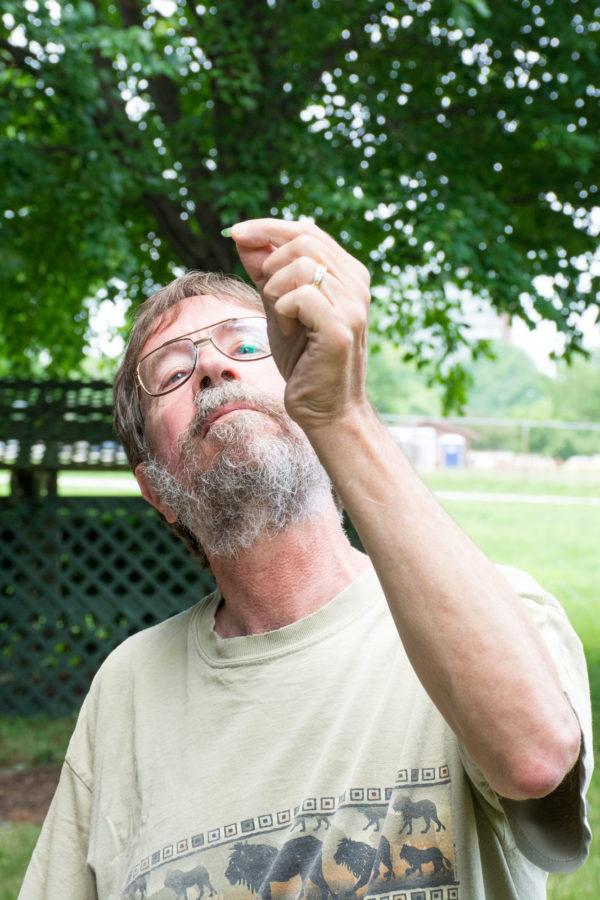College of Veterinary Medicine host to toxic plant garden
Christopher Kimble, University alumnus, examines the leaf of a St. John’s Wort plant at the College of Veterinary Medicine’s Poisonous Plant Garden open house on Saturday, June 20.
June 20, 2015
Just south of the Florida and Lincoln Playing Field, there is a carefully maintained and open garden with dozens of species of toxic plants.
This garden, however, does not pose a threat to the community; rather, it serves as a place of education. The Poisonous Plant Garden is run by the College of Veterinary Medicine at the University.
“We’re not an ornamental garden; we’re an educational garden,“ said Michael Biehl, toxicologist and faculty adviser at the College of Veterinary Medicine. “Its primary focus is to be part of the toxicology training program for veterinary students, so they can recognize toxins in practice. However, it’s also an educational garden for the public.”
The Poisonous Plant Garden has operated for over 20 years. It was founded by veterinary student Paula Bratich in 1990 and has been managed by one or two student curators every year since.
Over the years, the garden’s collection of toxic plants has grown to over 90 different species. All of these species are known to be hazardous to various species of animals.
Get The Daily Illini in your inbox!
It’s up to the student curators to ensure the survival and functionality of the garden throughout the year, especially since the climate of Urbana can vary greatly with the seasons.
“We mow, weed and keep it going through the summer,” said Lynsee Melchi, curator of the garden and junior in Veterinary Medicine.
“We also give tours during the toxicology part of courses for students,” said Laura Reynolds, another curator of the garden and sophomore in Veterinary Medicine.
Most of the species on display at the Poisonous Plant Garden can be found locally and can be ingested by farm animals. However, there are plants that do not grow locally but can still pose a threat to communities. One such species is the Sago Palm.
“It doesn’t grow here, but it’s become very, very popular as a house plant, and it’s very toxic to dogs,” Biehl said. “There are certain plants that are not native, but they are very germane to local animal safety.”
The Poisonous Plant Garden was a part of the 2015 Champaign County Master Gardeners Garden Walk on Saturday. The Garden Walk is an annual event during which visitors can tour various gardens in and around the University.
“Usually the end of June is when we participate in the Garden Walk,” Melchi said. “We have people from the community come, and we give tours to the public about the toxic principles of the plants.”
The Poisonous Plant Garden is located on the College of Veterinary Medicine campus, south of St. Mary’s Road, and is open to the public from early summer to early fall. Plants are moved to the on-campus greenhouse in the winters for protection and maintenance. Tours can be arranged online at its website.
benlash2







